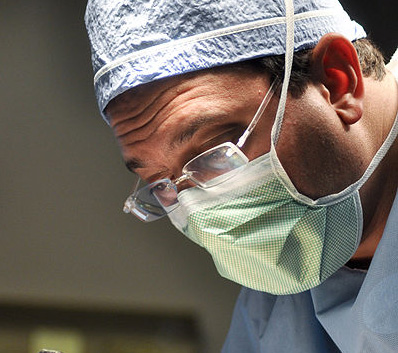King Solomon said “there’s nothing new under the sun,” and one can certainly apply this adage to one of the most recent “advances” described in plastic surgery.
In the New York Times April 3, there was an article headlined, “The debate over stem-cell face-lifts.” While many surgeons are advertising this new technique for facial rejuvenation, many plastic surgeons believe it corresponds to a nonsurgical approach called fat grafting or liposculpture, which has been widely used for many years. So what is myth or hyperbole and what is real?
In traditional fat grafting, fat is removed from one area of the body, typically the abdomen or thighs. The fat is harvested with a syringe or liposuction technique, typically under local anesthesia and then spun down to separate the fat from blood and anesthetic. The fat is then injected in a series of small increments into areas like the lower eyelids, cheek or malar area, temporal or sideburn area and nasolabial folds and marionette lines (the lines between the side of the nose and lip and at the edges of the lower lip). The injected fat can then survive as a graft in its new location, giving a fuller, more rounded and youthful appearance to the face and a healthy glow to the skin. Not all the fat will survive in its new position and the procedure may need to be repeated to maintain the results (similar to injectables such as collagen, Juvaderm and Restylane). This is where the stem cells come in.
What are stem cells and what is the role they are supposed to play in rejuvenating the face? We all start as a two-celled organism and over approximately nine months, through cell division and specialization, develop into completely functioning individuals. This process requires plenipotential stem cells to develop into different classes of cells, from heart cells to kidney cells to fat cells. Some of these cells maintain the ability to develop into different classes of cells after birth and these are the adult stem cells that all the excitement is about.
Theoretically, these stem cells could be harvested to regenerate injured tissues and considerable research is currently aimed at this specific point. Now localized collections of fat cells in humans are known to be natural reservoirs for adult stem cells, and the theory is that these stem cells can be injected with fat cells to rejuvenate the face. But is this theory worth a $5,000-to-$10,000 procedure?
Two major plastic surgery groups sponsored a study to develop a position paper on this very topic and the results are underwhelming. To date, the hype about the stem-cell face-lift appears to be just that, hype, and there is a lack of evidence supporting the claims. The task force wrote that “the marketing and promotion of stem-cell procedures in aesthetic surgery is not adequately supported by clinical evidence at this time.” With that said, more evidence is currently being gathered to address this question, and there may be a role for this approach in the future.
For now, there is the traditional surgical face-lift for facial rejuvenation and nonsurgical approaches, such as fat injection and filler injections like the above mentioned Juvaderm and Restylane, as well as Radiesse or Sculptra. There is so much that can already be done in this area, with newer approaches on the horizon. As always, “let the buyer beware” is one of the best pieces of advice I can give to prospective patients. If you are interested, do the research on your own, speak to friends, family and your physician for advice and consult with well-trained surgeons familiar with both surgical and nonsurgical approaches to facial rejuvenation. In general, I would try not to be one of the first people to undergo a new procedure.
Please send any questions or comments to mrosenberg@nwhc.net. n

